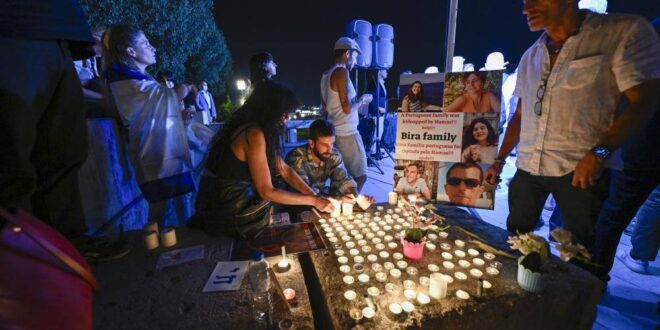Who has been taken, what were Hamas’ motives, how common is mass hostage-taking and is there hope for the safe return of hostages?

Hamas is holding between 100 and 150 people hostage in the Gaza Strip, according to Israel’s ambassador to the United Nations, Gilad Erdan – who describes it as ‘an unprecedented number’.
Who has been taken?
The vast majority of those being held are Israelis, but it is thought other nationalities are among their number including Britons, Americans, Germans, Thais, Mexicans, Brazilians and Nepalis.
It is being reported that an official UK source has confirmed that there are 17 Britons feared dead or missing.
Why did Hamas take hostages?
There are five likely reasons why Hamas took so many hostages as part of its attack on Israel. First, it will hope to use the hostages as a ‘human shield’ in the face of Israel’s counter-attack: given the scale of Hamas’ actions, it cannot have anticipated anything but a full and robust response, such as it is now seeing.
The hostages are an insurance policy, to be used as bargaining chips as the conflict evolves
Second, the hostages are an insurance policy, to be used as bargaining chips as the conflict evolves. Hamas has said it will murder hostages if Israeli forces target Gaza residents without warning them and they are likely to issue further demands as time goes on.
In 2011, Hamas negotiated the release of hundreds of Palestinian prisoners in return for their release of Israeli solder, Gilad Shalit, who they held for more than five years. Hamas knows that Israel has a track record of leaving no hostage behind.
There are reports that Qatar is leading negotiations to release women and children being held hostage in return for 36 Palestinian women from Israel’s prisons, although an Israeli official denied these negotiations are underway, and there is no movement on this to date.
Third, hostages create media opportunities for Hamas and an ability to control the narrative.
If and when things are not going well for the group, their continued ability to hold hostages sends a signal of their strength and Israel’s powerlessness
If and when things are not going well for the group, their continued ability to hold hostages sends a signal of their strength and Israel’s powerlessness to bring them home. The fact they hold citizens of other countries, including the US, amplifies this further.
Fourth, the multinational nature of the hostage group draws other countries into events in Israel, inflicting harm not just on Israel, but also on some of its closest allies.
Hostages dominate attention at the very top of government; they are citizens, but also represent so much more to the countries affected, making kidnapping one of the most effective asymmetric tools of war.
Fifth, hostage taking, especially on this scale, generates sheer terror, shaking the very foundation of life for many Israelis.
How common is mass hostage-taking?
Mass hostage takings are rare because they are very difficult to pull off. Only a handful of cases have occurred in recent decades.
In 1996, hundreds of hostages were held by a leftist guerrilla group at the Japanese embassy in Lima, Peru. In 2002, Chechen separatists took 850 hostages in the Moscow theatre siege. Hundreds of Westerners were kept as human shields by Saddam Hussein during the first Gulf War in 1990. And 52 Americans were held hostage for 444 days at the US embassy in Tehran in 1979. Things often didn’t end well for the hostage-takers in these scenarios.
The plight of these hostages is perilous. They are held by a group that has committed unspeakable acts of violence in recent days, in a territory (Gaza) which is under constant air attack and faces an impending land offensive. Many of them are likely to have been injured as they were taken.
The hostage families
The families of hostages will be experiencing unimaginable terror. Many have seen television images of their loved ones being taken, or received calls and messages from them only for the line to go dead, the signal disappear.
 Geostrategic Media Political Commentary, Analysis, Security, Defense
Geostrategic Media Political Commentary, Analysis, Security, Defense





